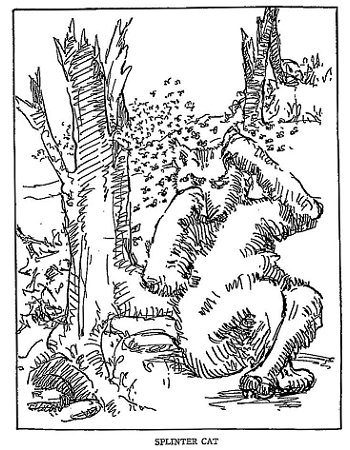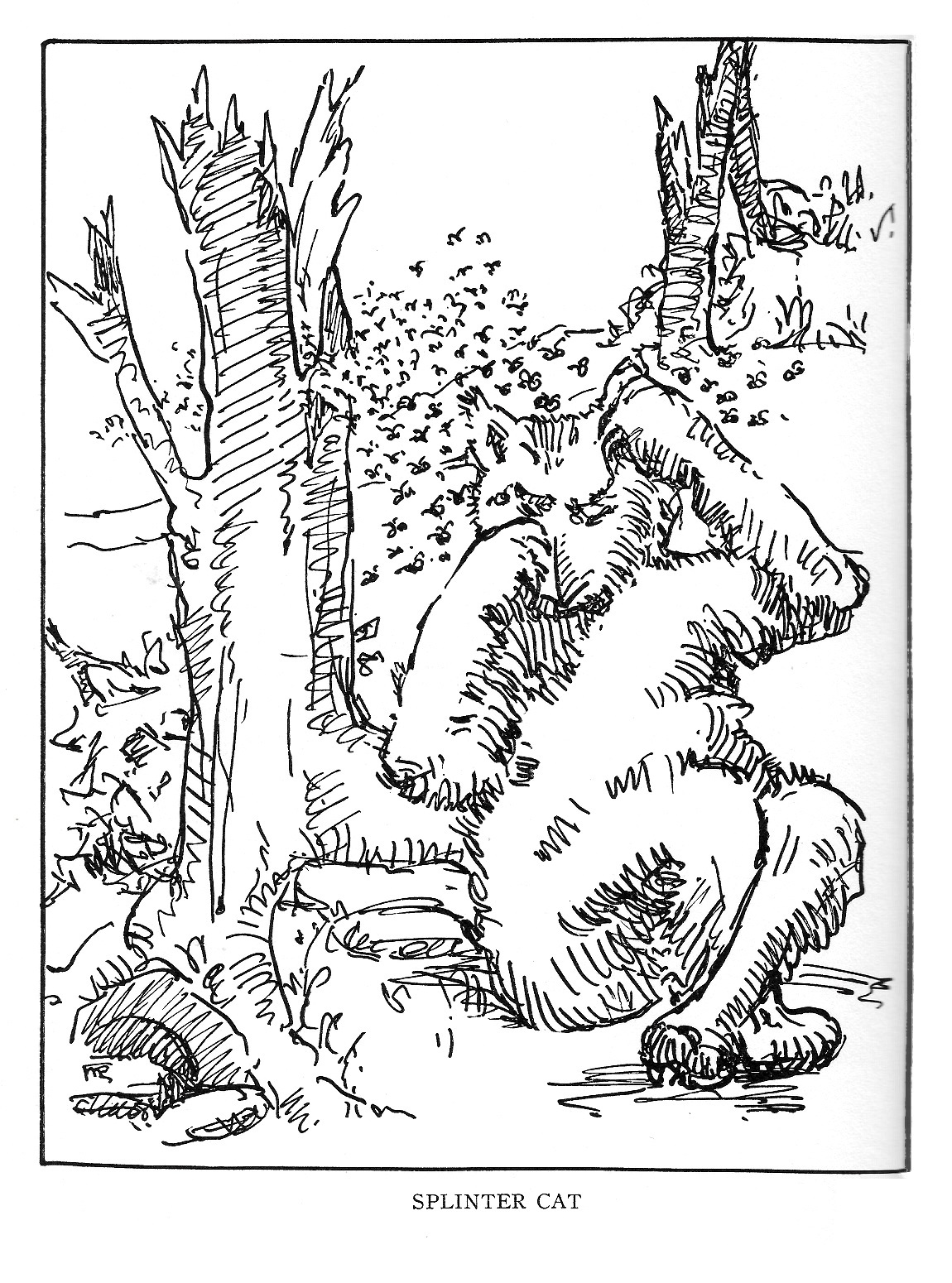
Nasusossificatus arbordemolieus
How often do we see big trees that have been snapped off, split, or shattered? Such breakage is frequency erroneously attributed to lightning, high winds, or snow and ice. These natural factors do cause some of this damage, but the experienced woodsman knows well that the bulk of it results from the moronic activities of the Splinter Cat.
This powerful feline, harmless to mankind, is found in nearly all the timbered regions of North America. Like many of the cat tribes, he is strictly a night traveler and hence is rarely observed. But he’s often heard, and the abundance of his work is ample evidence of his existence, numbers and activity.
A heavy, chunky body with a short wheelbase, mounted on tremendously powerful legs, with the countenance in a wedge-shaped nose formed of unusually dense bone, the Splinter Cat goes a-roaming in search of hollow trees, since bees, honey and coons are his favorite diet. He climbs a tree, guns-himself at the desired hole, and projects himself at it with terrific force. The bony nasal process splinters and shatters the stem, sometimes snapping it clean off. If the Cat finds food in the ruptured trunk, he is temporarily appeased. If not, he goes immediately for another tree. And right there is the big trouble. The Cat doesn’t use any judgment in selecting trees, he just smashes one after another until he gets a meal. Unlike more intelligent parties, he doesn’t seem to be able to learn the outward signs of a bee or coon-tree.
[ 47 ]






